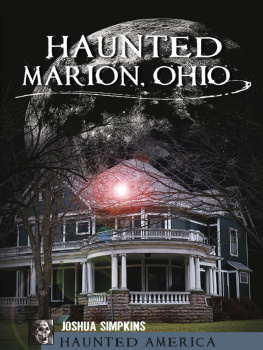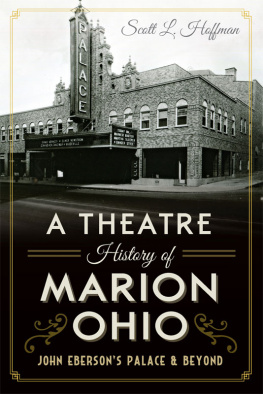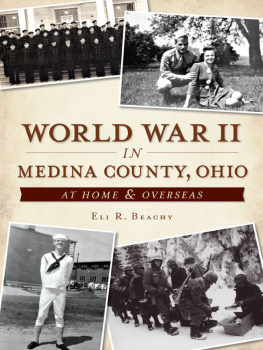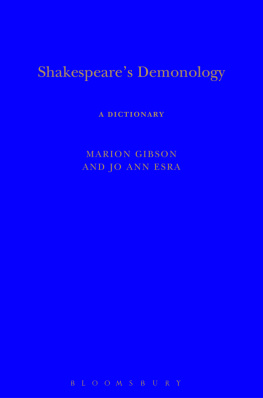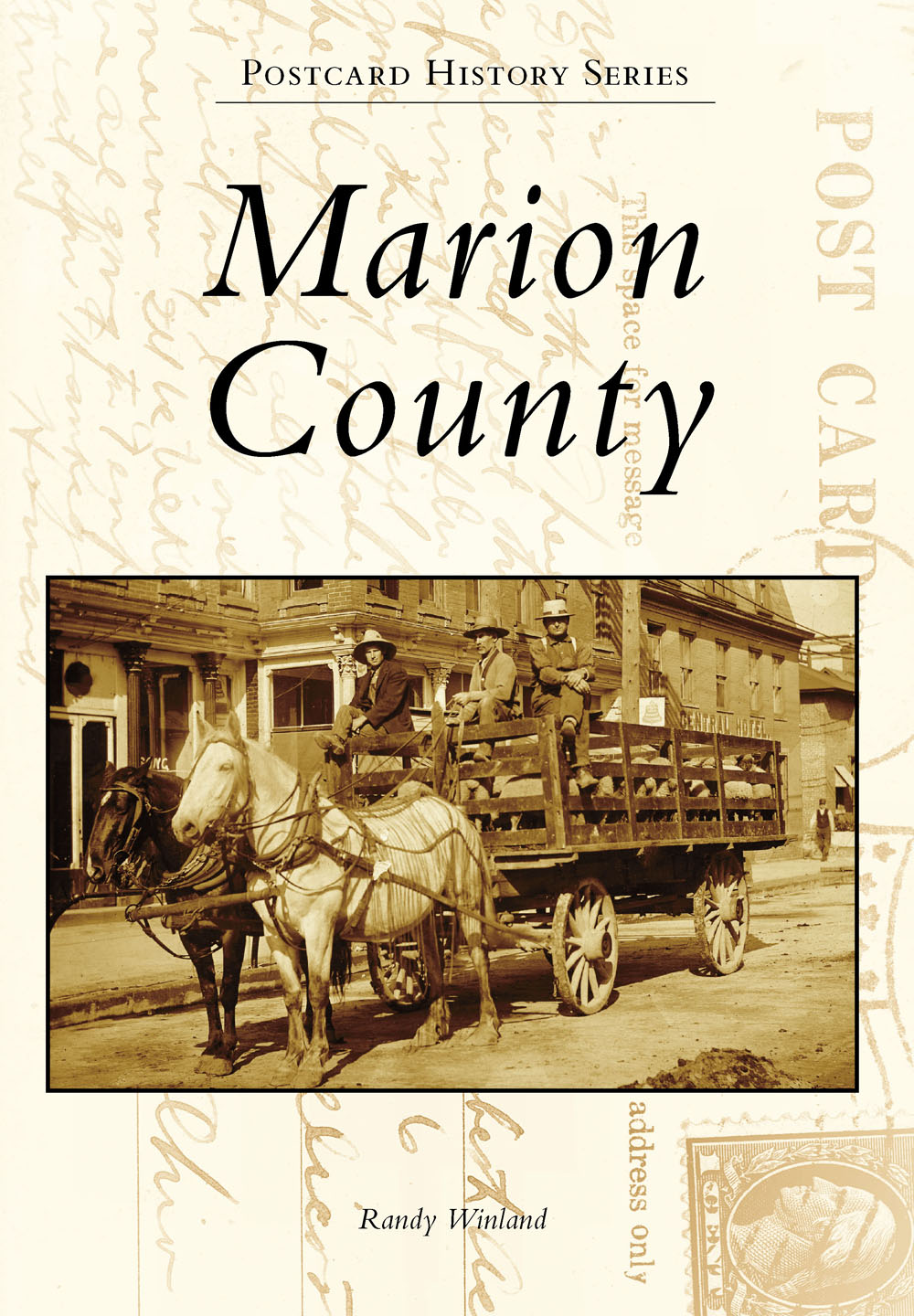
POSTCARD HISTORY SERIES
Marion
County

TWINS OR TRICK? What at first glance appears to be a photograph of identical twins is actually a creative use of double-exposure photography. The technique, which merges two subjects into a single photograph, has been around since the late 1800s. The identity of the young man is unknown, although he may have been from the LaRue area based on the address and postmark on the card. (Courtesy of Richard Carey.)
ON THE FRONT COVER: OFF TO MARKET. Prospect farmer Ferd Gabriel (center) brought a wagonload of sheep to a brief halt to allow this photograph to be taken near the Central Hotel in Prospect. The fly nets hanging from the horses harness consisted of small strips of leather designed to move as the horses walked, thus keeping away annoying flies and other insects. (Courtesy of Jane Burkett.)
ON THE BACK COVER: HARDWARE AND IMPLEMENT SALES. The farm equipment and hardware needs of Morral area farmers and residents were likely taken care of via these two stores located in the Morral Bank building. The rich, dark soil produced bountiful crops but required sturdy equipment pulled by strong horses to work it into suitable condition. (Courtesy of Ellis and Margaret Hudson.)
POSTCARD HISTORY SERIES
Marion
County
Randy Winland

Copyright 2017 by Randy Winland
ISBN 978-1-4671-2621-2
Ebook ISBN 9781439662328
Published by Arcadia Publishing
Charleston, South Carolina
Library of Congress Control Number: 2016959855
For all general information contact Arcadia Publishing at:
Telephone 843-853-2070
Fax 843-853-0044
E-mail
For customer service and orders:
Toll-Free 1-888-313-2665
Visit us on the Internet at www.arcadiapublishing.com
Dedicated to the collectors of memories of Marion Countybe they past, present, or future
ACKNOWLEDGMENTS
The efforts of a group can often successfully accomplish what may have been overwhelming for an individual. Such was the case with the compiling, researching, and writing of this book. Many people graciously shared their resources, including postcards, historical documents, knowledge, and time. The end result is something that will hopefully be used and enjoyed by its readers.
The postcard images were compiled from the collections of several individuals. Nearly half of the images came from Richard Carey, who has amassed an amazing collection of Marion County ephemera and memorabilia and willingly shares it for projects such as this. The desire to allow others to view many of his perhaps one-of-a-kind postcards was a driving force behind the publishing of this book.
Others who shared their collections are Mike and Linda Perry; Bob Turner; Ellis and Margaret Hudson; and Kim Hall, owner of the Ralph and Erdine Eaton postcard collection. Jim Anderson, Wayne Apt, Jane Burkett, Kensel Clutter, Richard Johnson, Rebecca Johnson Oldham, John and Virginia Murphy, Terry Kreis, Rebecca Jacobs Rynders, and the Marion County Historical Society also provided images.
The research for this project proved to be a daunting task, as reliable sources of information were often conflicting or simply not available. Extensive efforts were made to ensure the accuracy of information, but as with most historical research, discrepancies may exist. Dennis Fabian, Stuart Koblentz Haley, and Bob Turner provided invaluable assistance, and their efforts were greatly appreciated. Research assistance was also provided by Jim Anderson, Jane Burkett, Michael Crane, Douglas and Marjory Denzer, Charlie Evers, and Jim Forry Jr. Others who provided assistance include Gary Hite, Richard Johnson, Mark Melroy, John and Virginia Murphy, Rebecca Johnson Oldham, Wayne Porter, Willis Thomas, and Jack Whiteamire. Dale Stage and other employees of the Marion County Engineers Office provided answers to numerous inquiries. My sincere gratitude is extended to all.
Finally, and most importantly, I truly thank Sandy Winland, my wife of 41 years and my best friend. Her acceptance and support of the many days I spent scanning, researching, compiling, and writing were greatly appreciated. Her suggestions for possible improvements in the content and grammar of the captions certainly made for a more concise and informative end product.
INTRODUCTION
The seven villages of Marion County and their surrounding locales are home to almost half of the total population of the county. A previous Arcadia Publishing book in the Postcard History Series featured the city of Marion but did not include these smaller communities and rural areas. They are the focus of this book, Marion County.
The geographical area that is now Marion County was sparsely inhabited, primarily by Native Americans, into the early 1800s, mostly due to the Greenville Treaty Line. The treaty line had been established in 1795 as part of an agreement signed with several Native American tribes that set off much of the northwestern part of Ohio for their use. The line passed through what is now Marion County about a mile north of the current villages of Prospect and Waldo.
By 1806, explorers and squatters had begun to venture north near the treaty line. The Wyatt and Brundige families both settled just south of Waldo in Marlboro Township, Delaware County. As tensions mounted with Great Britain, the federal government negotiated with the Native Americans for permission for a war road to be built from Delaware County to Lower Sandusky (Fremont). Surveyors marking the road traveled through the wilderness and established stopping points such as Jacobs Well, located in what would one day become the city of Marion.
The War of 1812 brought the threat of hostilities from Native Americans, who had largely allied themselves with the British based on the promise of the return of their land if the Americans were defeated. Troops by the thousands began traveling the war road to Lower Sandusky and on to Lake Erie, which engendered the need for a safe haven for the settlers living in the area as well as a supply depot for the troops. Fort Morrow was built at Wyatts Tavern, just south of what is now Waldo, to serve these purposes. Following the end of the war in 1815, travelers continued to pass through the area, with some settling on land they did not own. In 1817, the northwest part of Ohio was purchased from the Native Americans and became known as the New Purchase. This ended the Greenville Treaty Lines barrier to expansion for white settlers.
The land north of the treaty line began to be surveyed in preparation for land sales. Marion County was officially created in 1820 by the state legislature, with land sales beginning soon after. It remained attached to Delaware County for legislative and judicial purposes until 1823. Over the next several years, the countys boundary changed as adjacent counties were created or modified. The final change came in 1848, when Morrow County was created in part with five townships taken from Marion County. As compensation for this, the area south of the original Greenville Treaty Line was transferred from Delaware County to Marion County.
Marion County has seven incorporated villages: Caledonia, Green Camp, LaRue, Morral, New Bloomington, Prospect, and Waldo. There are several unincorporated communities, at least one of which has a larger population than some of the incorporated villages. Among these communities are Big Island, Brush Ridge, Claridon, Kirkpatrick, Martel, and Meeker.
Next page

